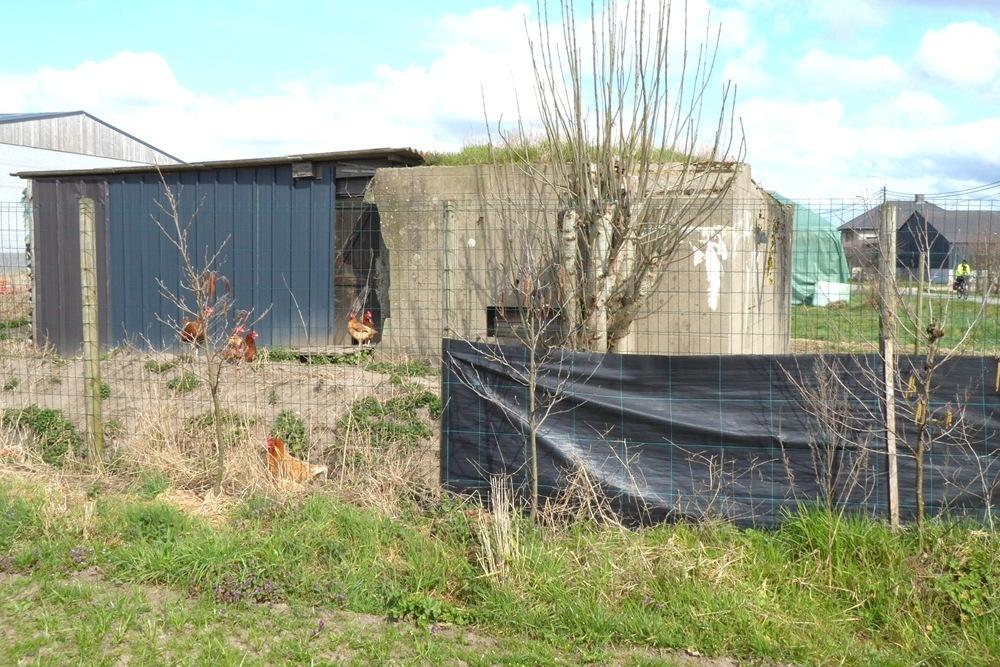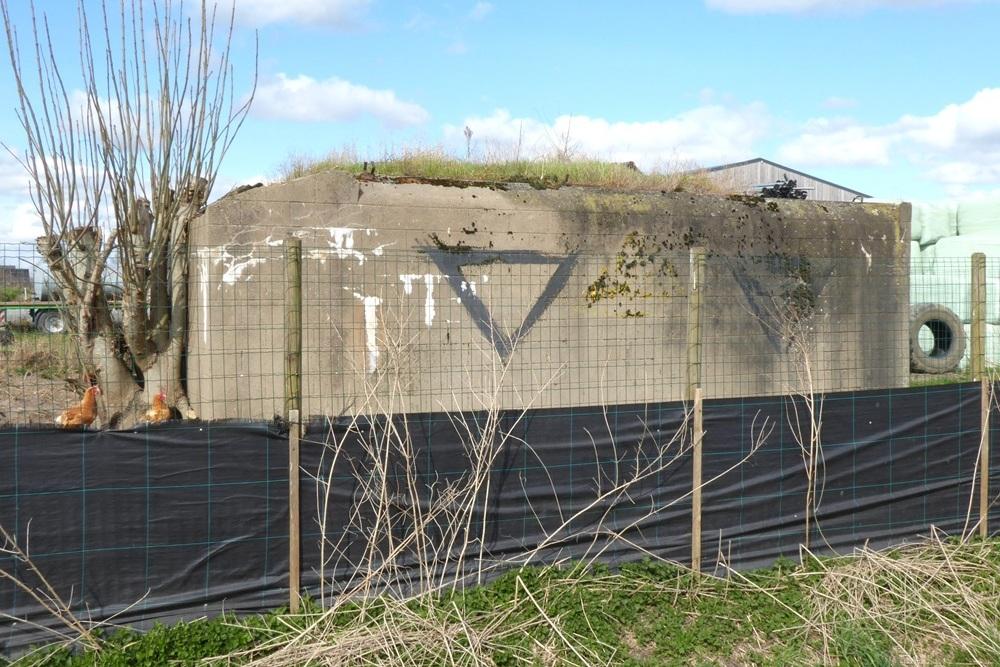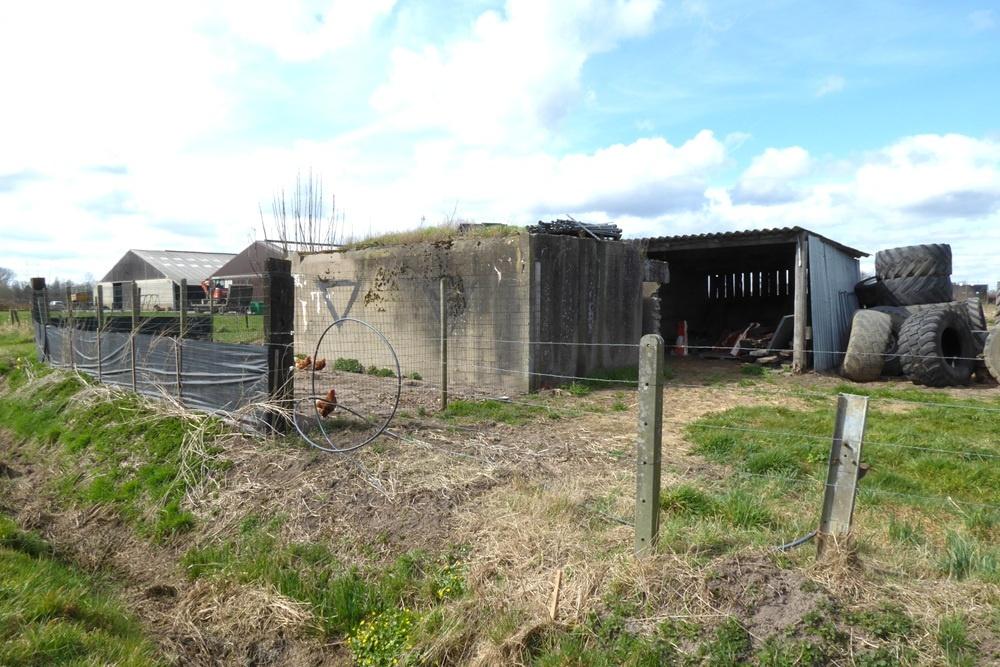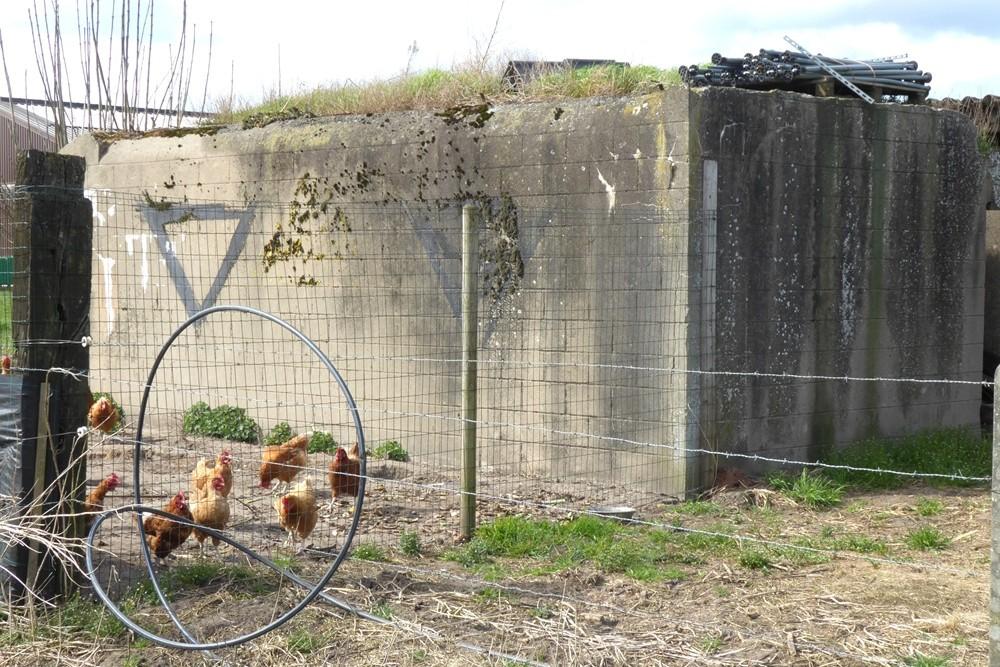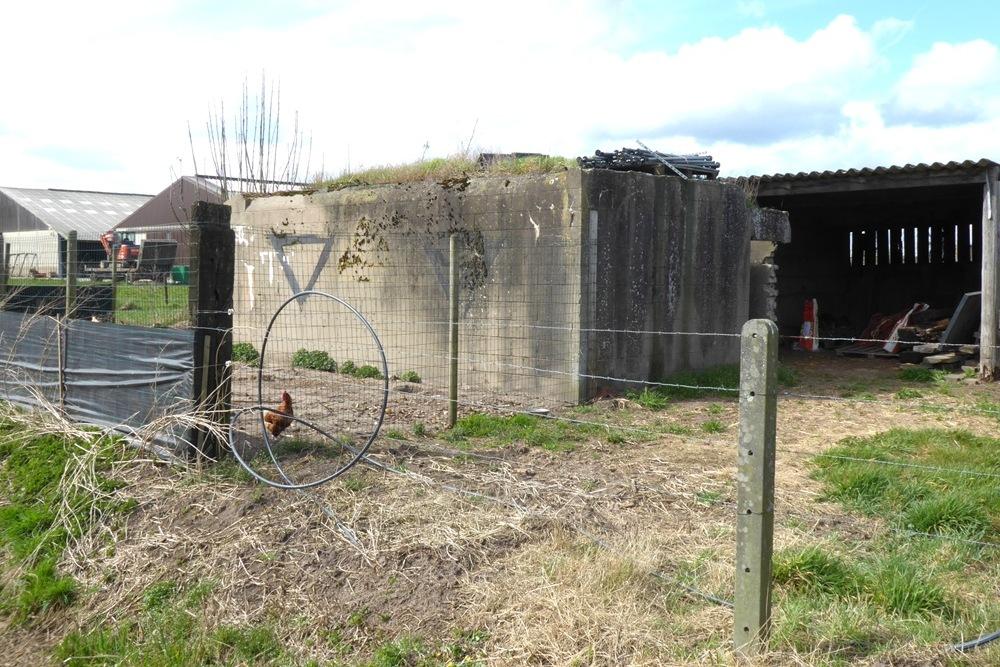Bunker Belt Bruggenhoofd Gent – Rear Line Bunker B14
Belgian bunker, part of the Ghent Bridgehead. This defensive position was constructed between 1934 and 1938, eight kilometres south of Ghent. Its construction was part of the fortification policy that Belgium pursued after the First World War.
The actual bridgehead consisted of two resistance nests – Betsberg and Muntekouter – and three strong points – Semmerzake, Eke and Astene.
The resistance nests and strong points were connected to each other by a curtain consisting of three defence lines.
B14 was one of two rear line bunkers positioned close together between the Eke strongpoint and the Scheldt. The closest bunkers were B13 (405 m) and B15 (145 m).
The corners were finished with bricks and the whole was cemented with the motif of ash stones. At the front there was a loophole hidden as a kind of window.
The saddle roof was covered with grey asbestos slates.
The bunker looked like a stable in a meadow.
It contained 1 room and an airlock. In addition to the facilities for the standard Maxim machine gun, it was also equipped for the installation of a Hotchkiss or Colt machine gun.
The bunker is easy to see from the street, it is in the middle of a chicken coop and a stable was built on the side.
Extensive information about this bunker belt can be found on the site Bunkergordel Bruggenhoofd Gent. It also contains photos, plans and technical data of the bunkers. A map shows the locations per municipality.
Do you have more information about this location? Inform us!
Source
- Text: TracesOfWar
- Photos: Marie-Christine Vinck
Nearby
Point of interest
- Information Board Battle of Gavere Semmerzake - Semmerzake (Gavere)
- Remains Eiserne Halle Scheldewindeke - Scheldewindeke (Oosterzele)
- Leopold barracks Gent - Gent
Monument
- Memorial Grenadiers Eke - Eke (Nazareth-De Pinte)
- War Memorial Eke - Eke (Nazareth-De Pinte)
- War Memorial Semmerzake - Semmerzake (Gavere)
Cemetery
- Belgian Graves Veterans Eke - Eke (Nazareth-De Pinte)
- Belgian War Grave Eke - Eke (Nazareth-De Pinte)
- Belgian War Graves Semmerzake - Semmerzake (Gavere)
Remembrance Stone
- Stumbling Stone Kortrijksesteenweg 890 - Gent
- Stumbling Stone Fortlaan 93 - Gent
- Stumbling Stone Monterreystraat 63 - Gent
